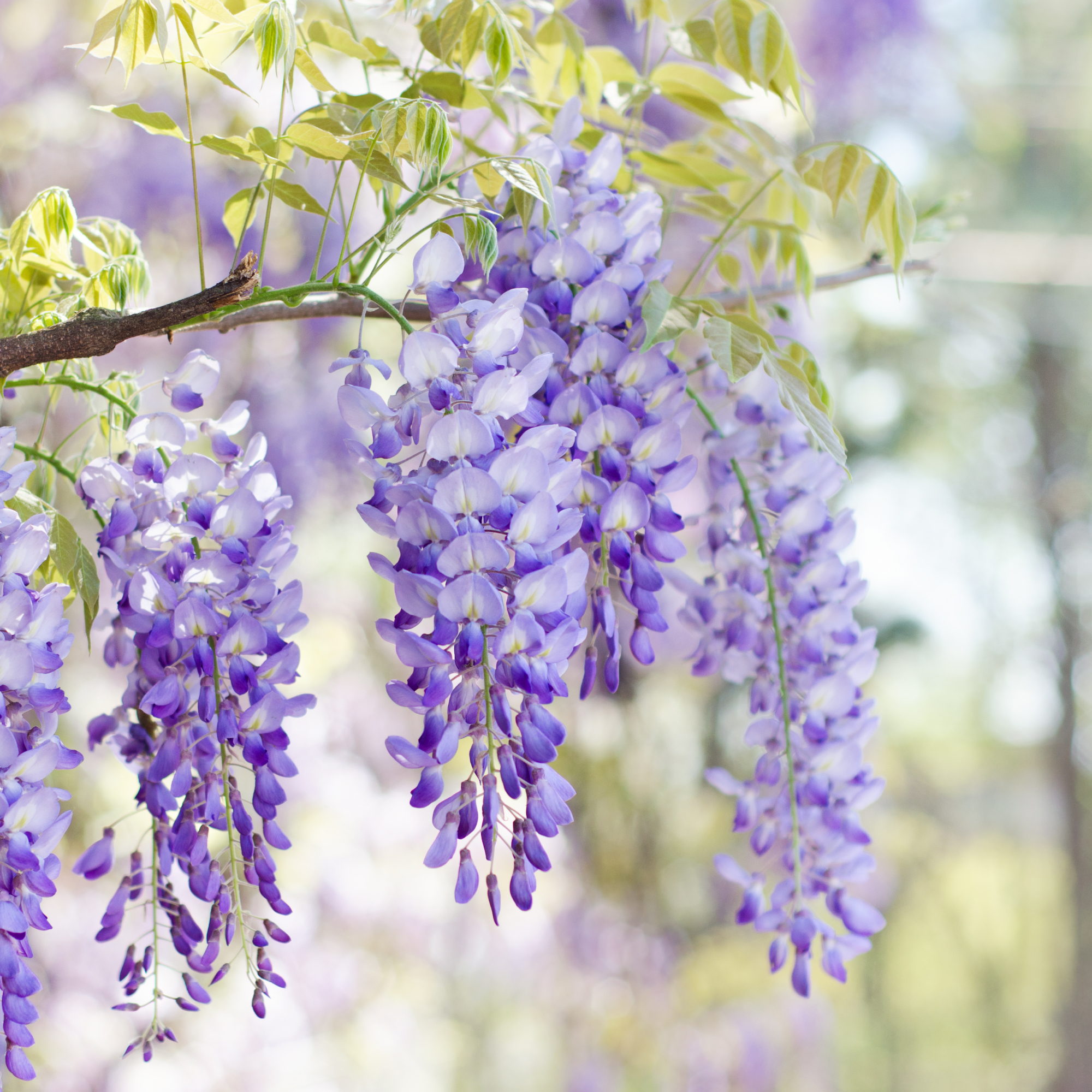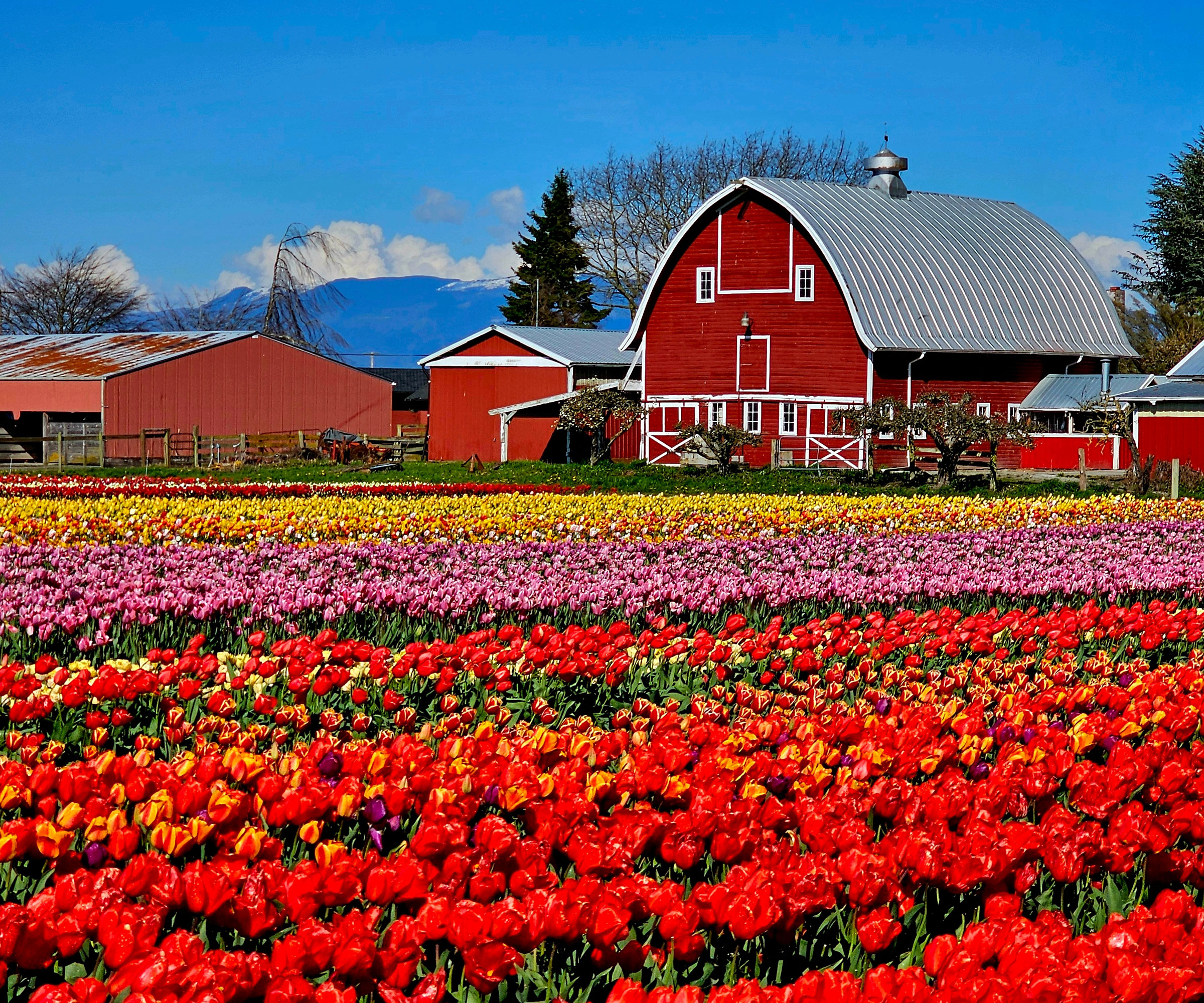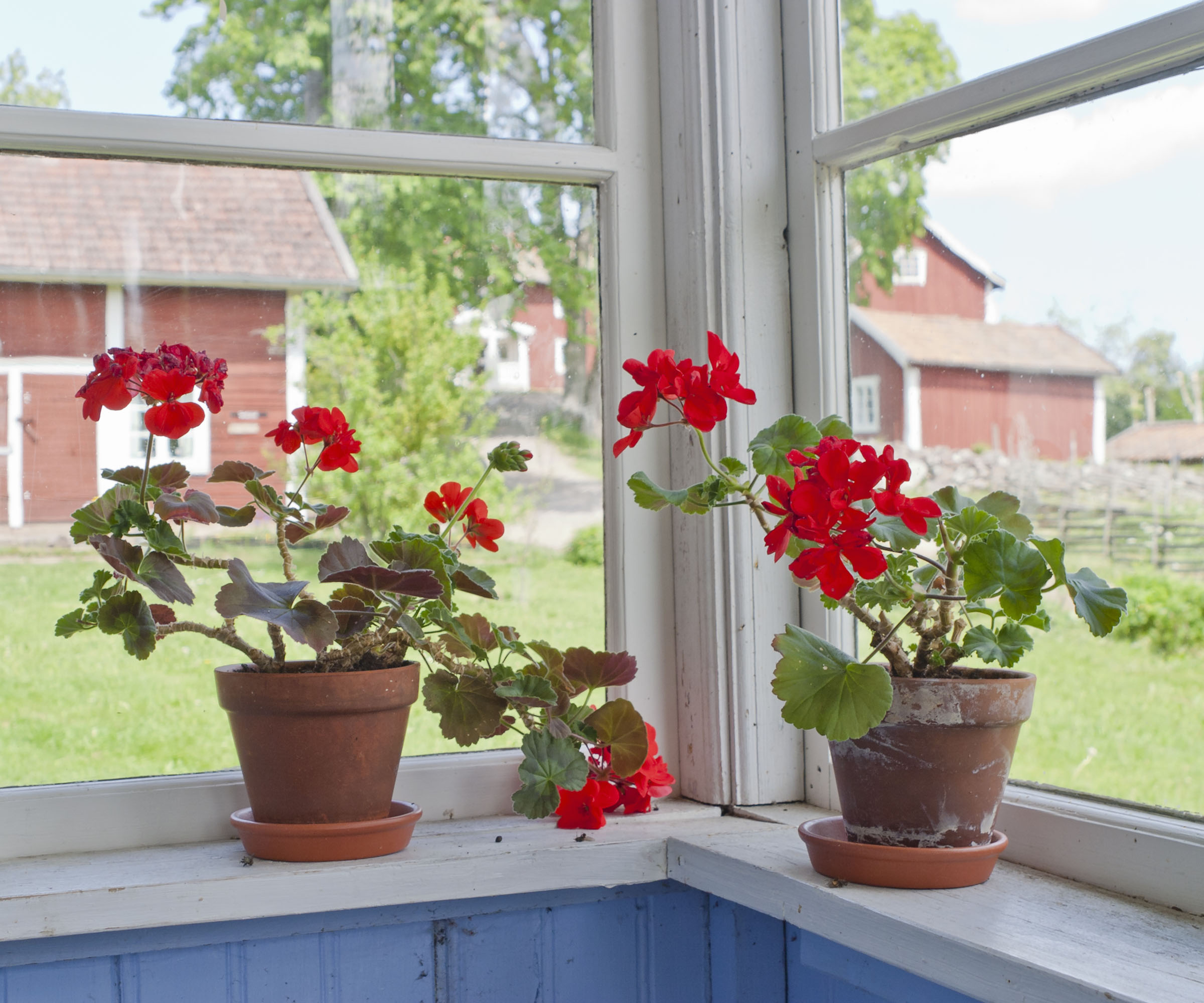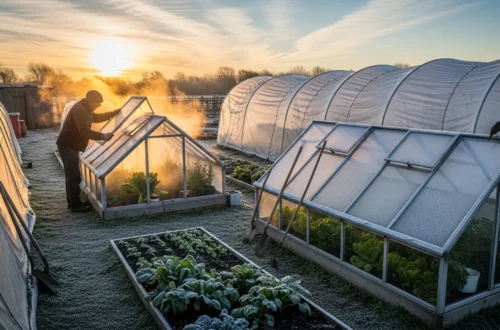The arrival of spring marks a period of rebirth and rejuvenation. Many of us are drawn to traditional pastel shades, classic whites, or vibrant pops of color in celebration of new plants and new life. That said, dark flowers continue to gain popularity and can add sophistication, mystery and depth to both classic and contemporary garden themes. Many types of black flowers, dark burgundies and deep purples are especially well-suited to supporting growth in the spring garden.
When we think about growing plants for color, these darker tones are capable of high impact, drama and intensity. They can also help to unify other color schemes we might have in play. Here are some of the most alluring and easily available black flowers that can add dramatic appeal to an early season landscape.
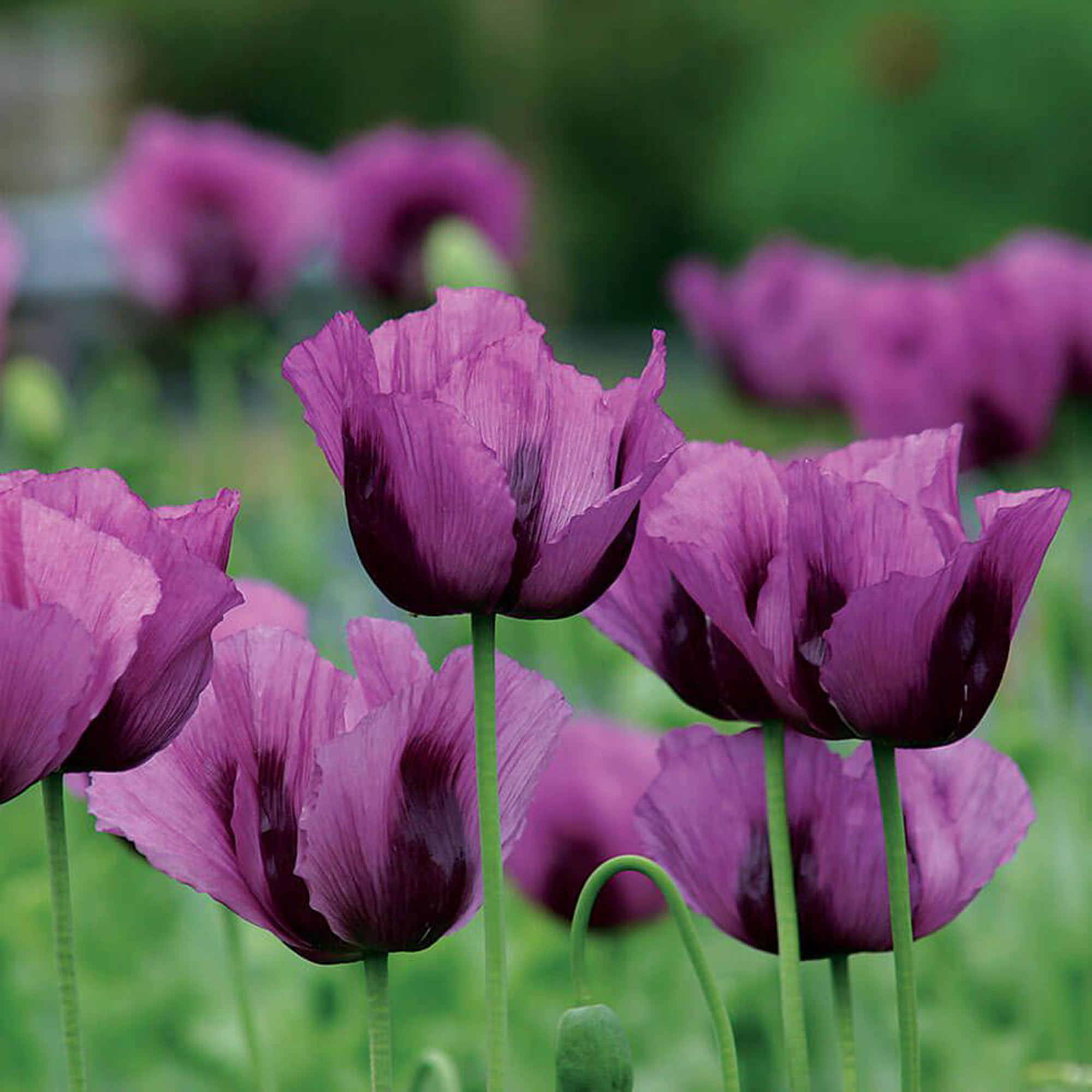
Grow Some Easy Deep Purples
Choosing Black Spring Flowers for Your Garden
Black flowers are impactful for a variety of reasons, most notably, their unexpected ability to create visual contrast and draw the eye throughout the garden. This makes them ideal for use in containers, near high-traffic areas, and even in larger beds.
Anyone hoping to add these plants alongside more colorful early spring flowers, or use them as the basis for dedicated black flower gardens, should consider that there are few ‘true blacks’ in nature. Many ‘black’ flowers are actually very deep shades of dark blue, rich burgundy, dark coffee and ultra-intense purple. Still, there is genuine richness and elegance to be found when designing with dark plants. Try some of these uniquely toned varieties to craft truly memorable garden spaces.
1. Dahlias

(Image credit: Tom Meaker / Getty Images)
Dark varieties of dahlia offer stunning depths of color and are sure to add mystery to most any flower bed. Most black dahlias actually open in shades of dark red, but vary in appearance, depending upon the light and the folds of their petals. Cactus dahlias and pompon dahlias may both be dark, but look like different shades completely due to their distinct floral structure and shape.
‘Verrone’s Obsidian’ is of special interest, due to its unique flower form. With its pointed petals, tinted burgundy to chocolate, it looks like a dark firework captured mid-explosion. Though most dahlias are hardy to USDA zone 8, they can be grown as an annual in most places.
2. Hellebores
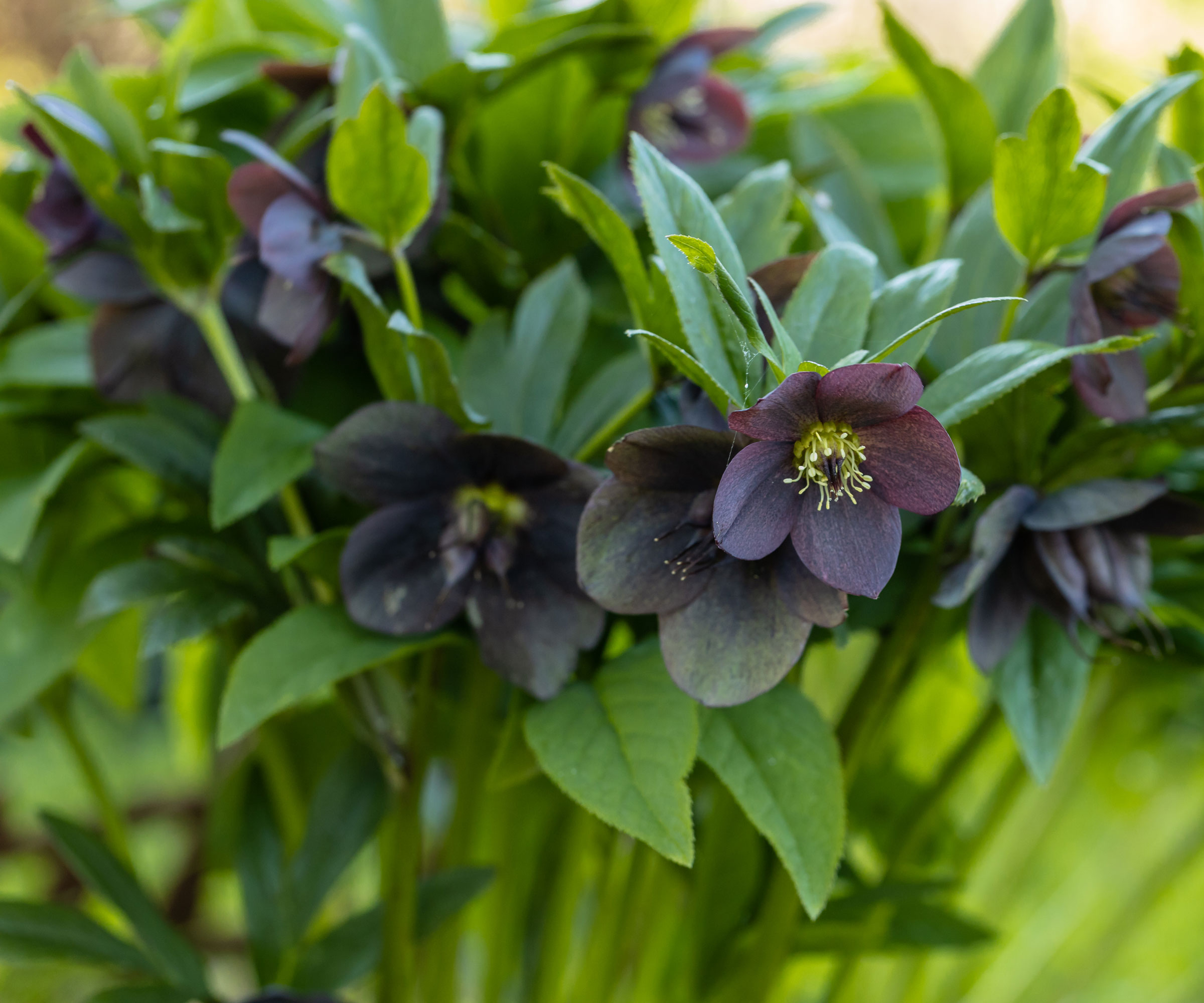
(Image credit: Olga Seifutdinova / Getty Images)
Hellebores are amongst the first flowers to appear in the garden, with most beginning to bloom in late winter. We tend to identify hellebores with shades of pink, cream, green or gold. Varieties such as Champion Green, available in the Gardening Know How Shop, appear almost luminescent in a spring display.
However, it is possible to grow intense darker shades. Hardy to USDA zones 6-9, several varieties open to reveal deep purple-black blooms. It’s easy and rewarding to grow these hellebores in containers or in large numbers along the edge of a wall, if allowed to naturalize. Try ‘Dark and Handsome,’ ‘New York Night’ and ‘Onyx Odyssey’ black hellebore plants.
These varieties are also highlighted in 7 New & Improved Cultivars Of Old-Fashioned Plants.
3. Hyacinth
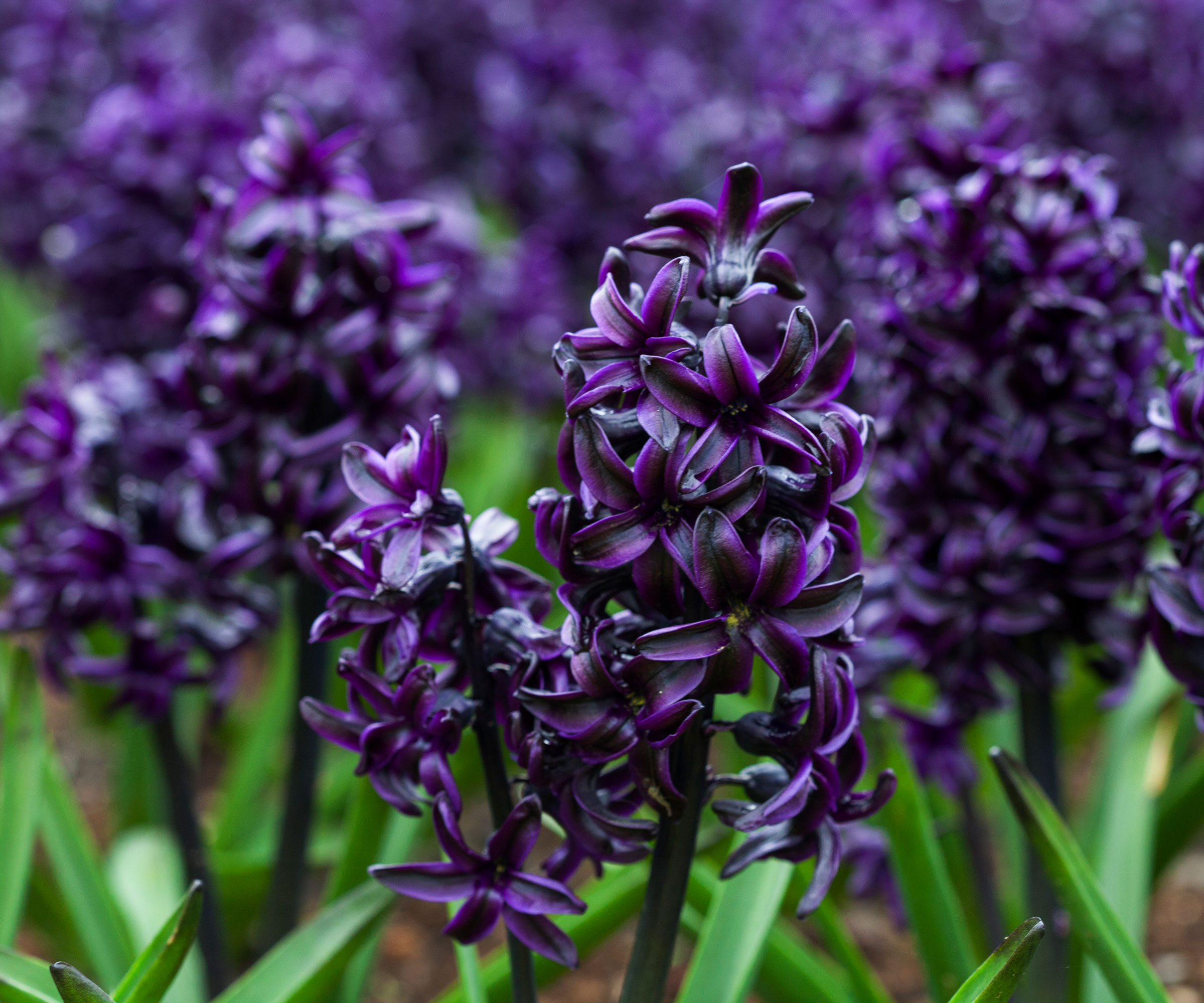
(Image credit: Me Che / Getty Images)
Hyacinths are an excellent addition to the spring garden. After planting hyacinths in fall, you can expect them to appear during winter and early spring. Though the plants are available in a wide range of colors, black hyacinth offers growers a distinctive lustrous sheen that is sure to make an impression in containers and beds. Most black varieties produce highly-saturated purple tones. Moody cultivars such as ‘Dark Dimension’ and ‘Midnight Mystic’ are especially popular.
4. Irises
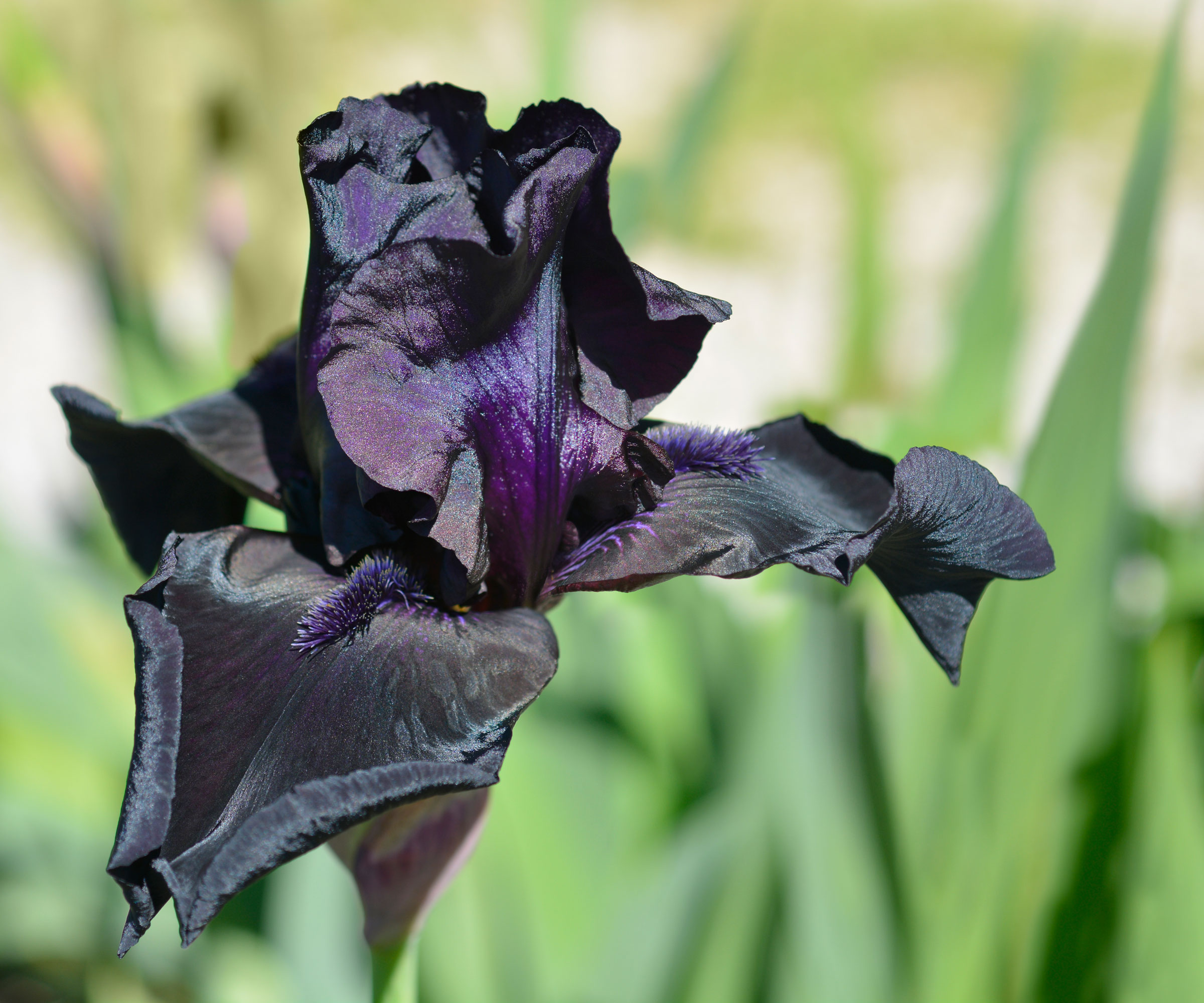
(Image credit: Nahhan / Getty Images)
Though pure blacks are uncommon in most species, iris plants are an exception. A large number of black iris cultivars are available that present with no obvious red, purple, blue or brown hues. Larger, bearded iris types are especially prized for their color and dramatic floral displays.
Plants require only a little care and are tolerant to the cold, performing well in USDA zones 3-9. This makes them ideal for pots and low-maintenance beds. Exceptional varieties of black iris to grow include ‘Awakening Embers,’ ‘Before the Storm,’ ‘Ghost Train’ and ‘Raven Girl’ cultivars.
5. Lilies
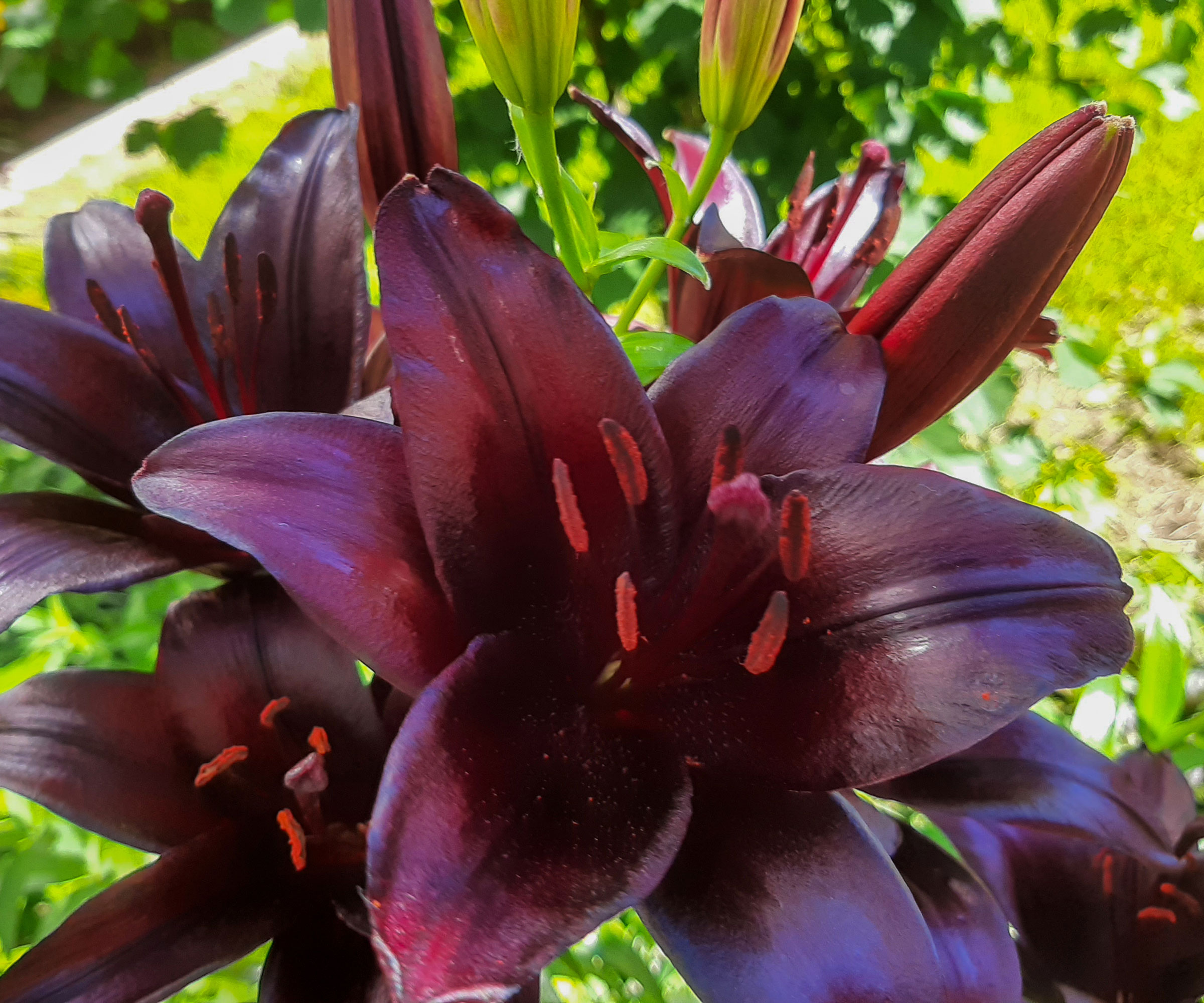
(Image credit: Svetlana Dunaeva / Getty Images)
The term ‘lily’ can be used to describe a variety of lily species, including those that are not true lilies (including calla). However, in their various guises, they can add real grandeur to the spring landscape, and should bloom early in the growing season.
Though each plant’s hardiness range will vary slightly, most will return seasonally, producing appealing foliage and black flowers. Common cultivars of black lily plants include ‘Blackstone’ and ‘Nightrider’ Asiatic lilies, as well as ‘Odessa’ calla lily.
6. Pansies
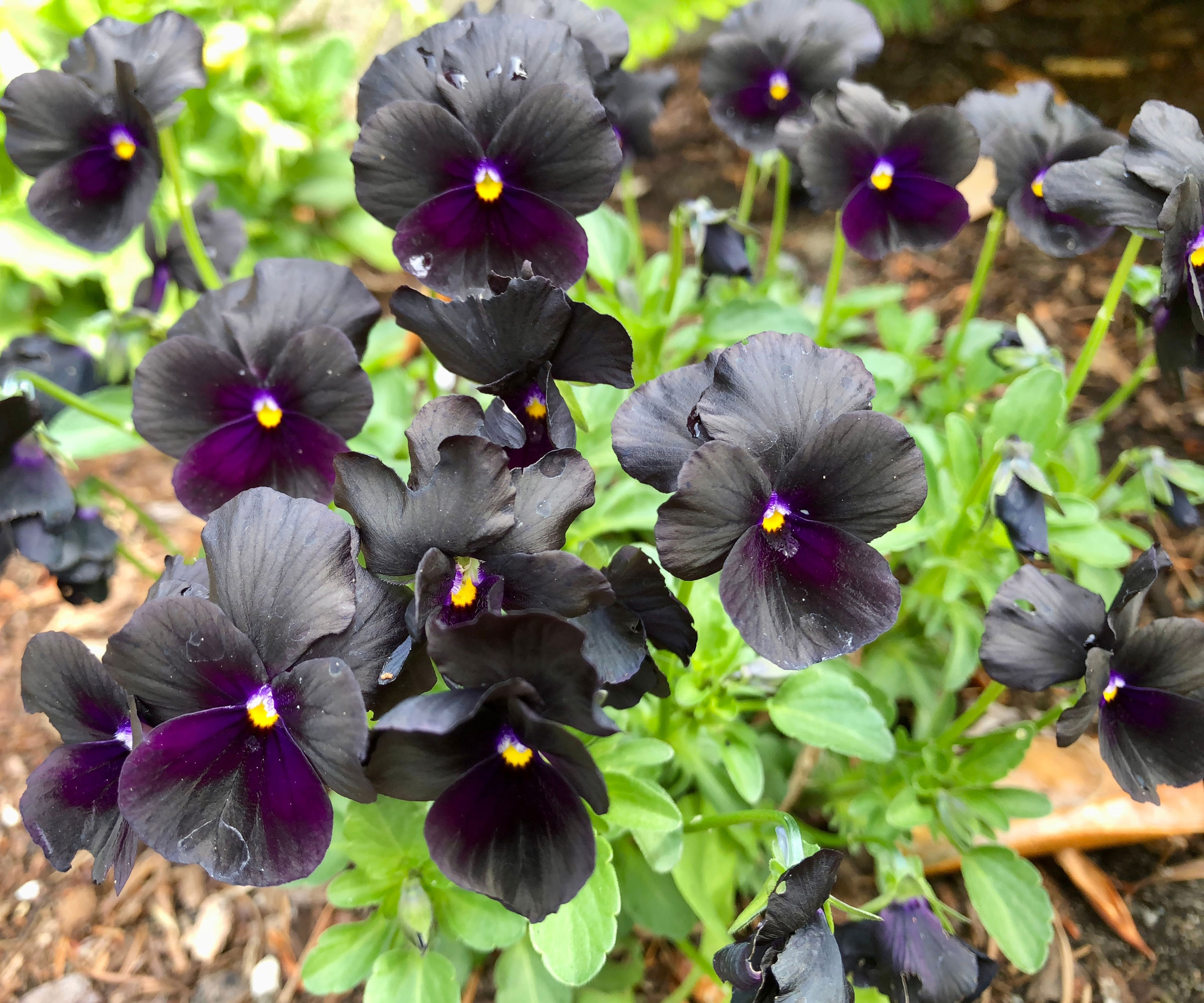
(Image credit: J Ferg / Shutterstock)
Pansies have long been used in containers and bedding planting, due to their early bloom time and ease of growth. Black pansies are no exception, and are highly sought-after for their intense color.
Often considered amongst the deepest shades available, varieties like ‘Black Devil’ and ‘Halloween II’ are sure to leave a lasting impression. For extended displays, you can grow pansies by sowing seeds in both spring and fall, depending upon your region.
7. Petunias
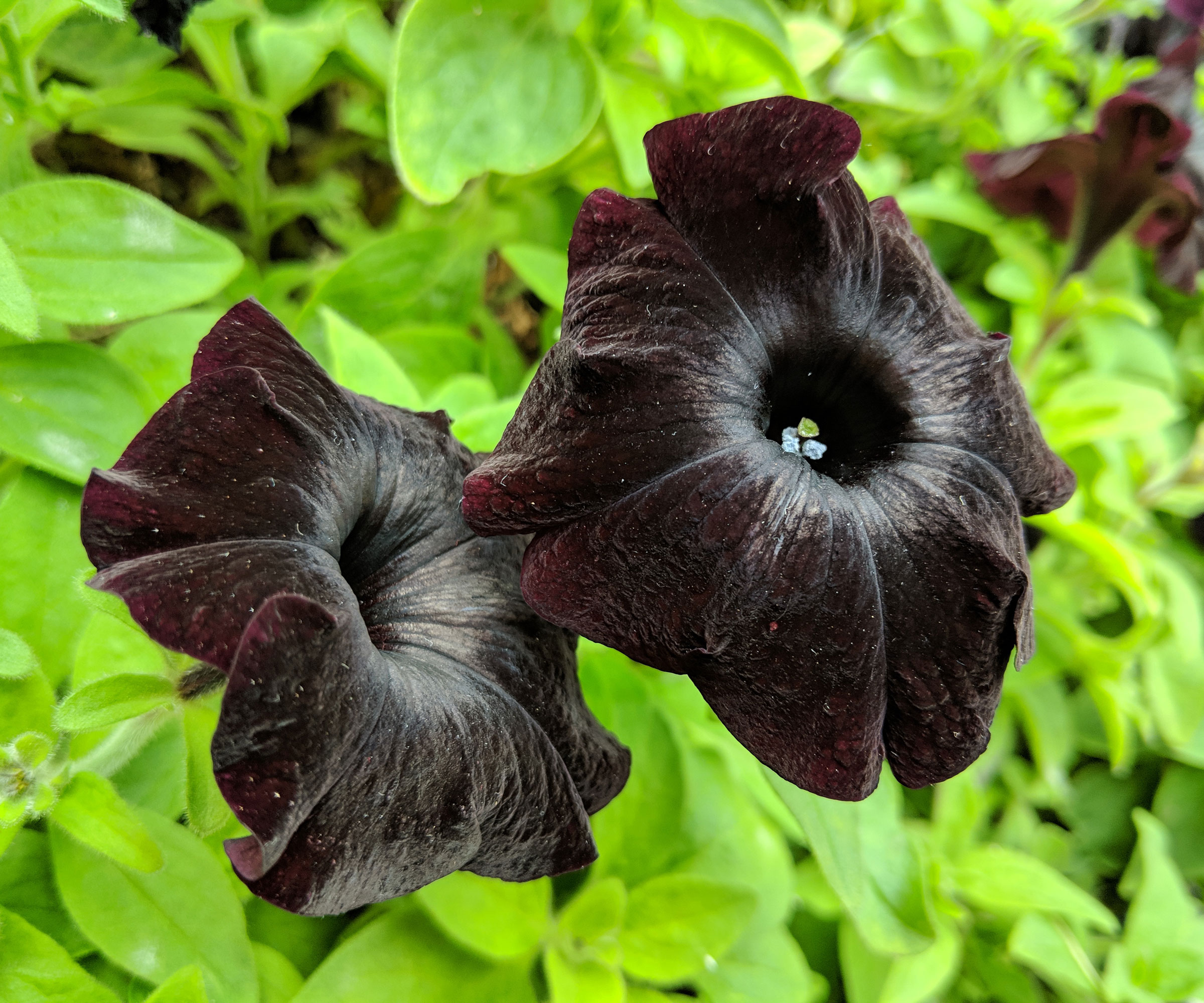
(Image credit: Chua Han Xiang / Shutterstock)
Another popular bedding option, petunias are beloved for their ability to set buds all season long. Dependable and long lasting, they are ideal for containers and hanging baskets. A profuse blooming habit gives varieties such as Tidal Wave Red Velour, available in the Gardening Know How Shop, its name!
Still, black petunias are also attractive, especially when interplanted with other varieties or grown in large groups. Increased interest in darker tones has led to expanded availability at garden centers each spring. If you wish to grow petunias on this end of the spectrum, try ‘Black Velvet,’ ‘Pinstripe’ and ‘Phantom’ varieties.
8. Tulips
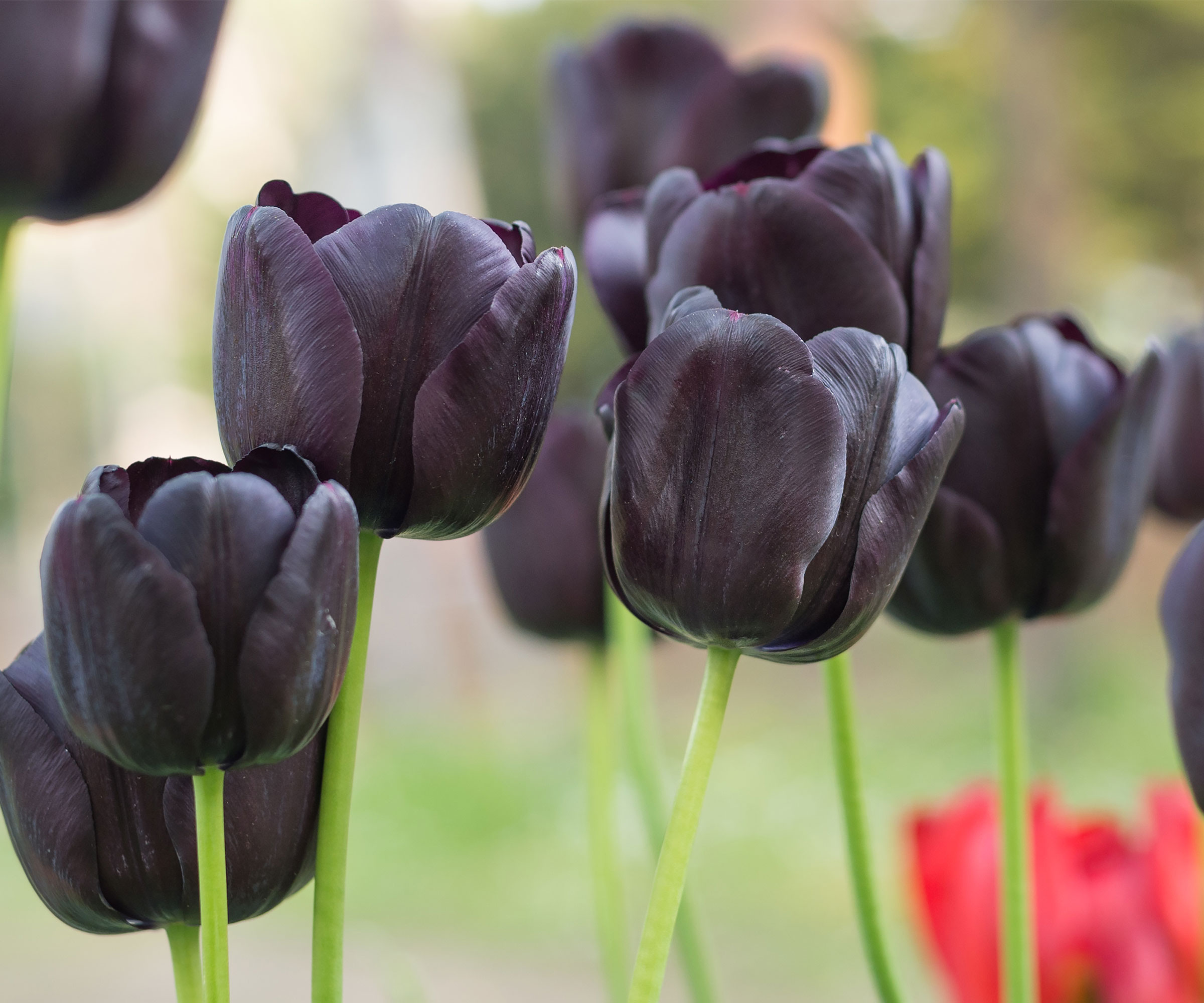
(Image credit: Santi JK / Getty Images)
Grown in USDA zones 3-7, tulips are amongst the most popular spring flowers. Though pastel colors are often considered a seasoned favorite, darker cultivars can be used to add allure, contrast and shimmering intensity to growing spaces.
Most black tulips open in varying shades of deep purple. However, light conditions within the garden can greatly impact the way the color is perceived. This often results in a distinct, jet-black appearance. Varieties like ‘Black Hero,’ Black Parrot,’ and ‘Queen of the Night’ are especially lush in spring beds and borders.
Frequently Asked Questions
Which Flower Colors Go Well With Black?
What do Black Flowers Symbolize?
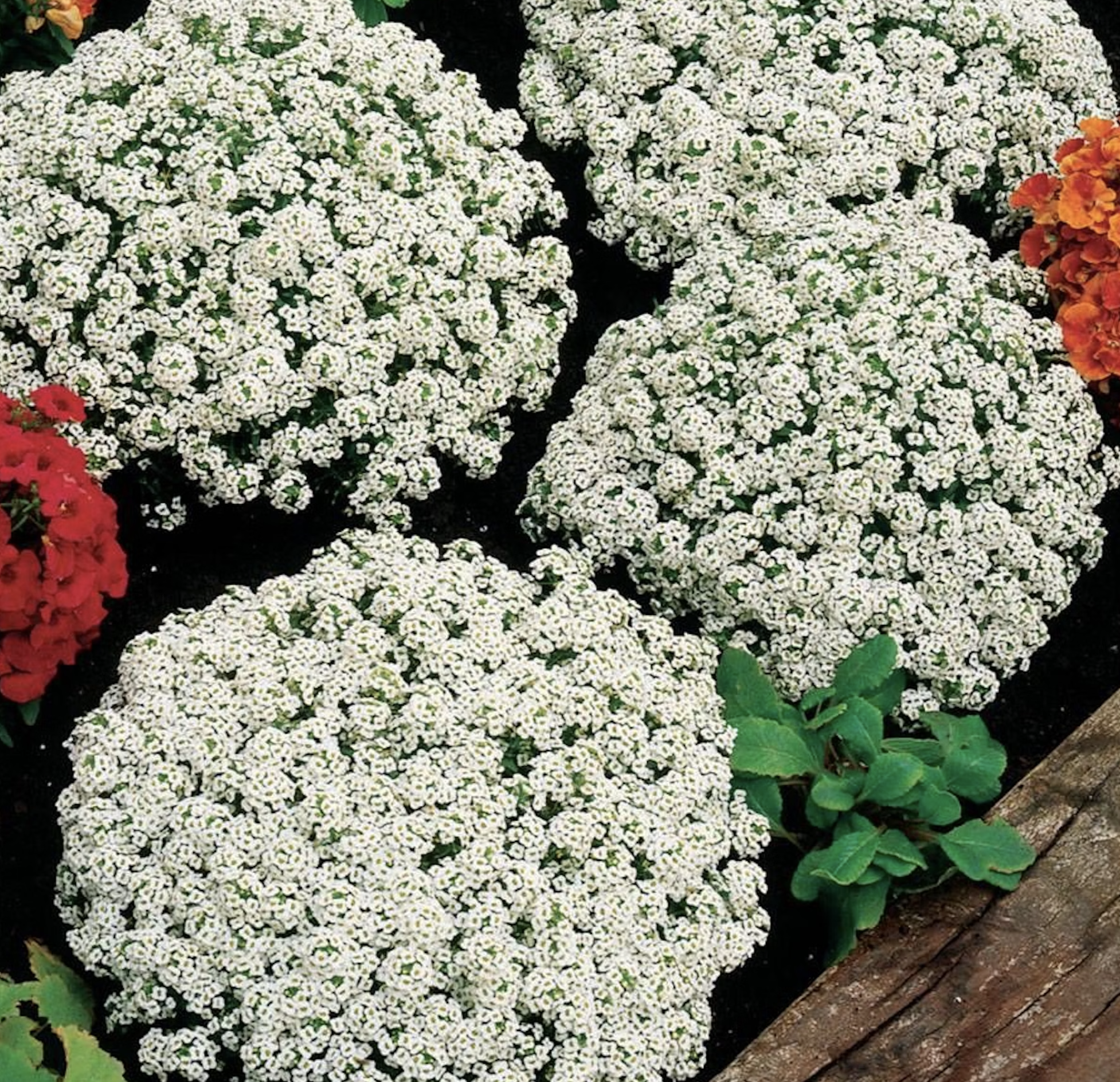
Perfect Whites For Your Blacks
More Dazzling Ornamental Planting Ideas
- Give your blacks a classic contrast with some of these 12 best white flowers – guaranteed to create a dazzling and iconic impression in your beds and borders. Give your black areas a classic contrast with meadow-style plants, as described in ’10 Meadow Flowers & Grasses For A Low-Maintenance Landscape’.
- For a spot of luxury garden design, partner your blacks with some unusual golden accents. Try some of these unique yellow flowers to add opulence to your displays. Try some of these unique yellow blooms by exploring 7 New & Improved Cultivars Of Old-Fashioned Plants.
- Fallen in love with moody plants and keen on exploring the dark side? We reveal how the goth gardening trend can add a brooding romanticism to your planting aspirations. Fallen in love with moody plants and keen on exploring the dark side? You might enjoy Slow Gardening: Rest, Relax & Reconnect With Nature.
- Grow some on-trend dynamism with cool blues and deep purples – check out our Blue and Purple Plants in the Gardening Know How Shop for a range of striking plant and shrub options. Grow some on-trend dynamism with cool blues and deep purples — see cultivar examples in 7 New & Improved Cultivars Of Old-Fashioned Plants.
This article features products available from third party vendors on the Gardening Know How Shop. Keep in mind that our plant inventory is limited – so if you’re thinking of purchasing, don’t wait!
FAQ — Black & Dark-Toned Spring Flowers
Q1. What exactly counts as a “black flower”? Are there true black blooms?
In nature, “true black” flowers are extremely rare. Most so-called black flowers are actually very deep shades of burgundy, purple, dark red, or nearly black tones. The intensity of light and angle can affect how dark they appear. The article points out that many “black” varieties are in fact very deep dark blues, burgundies, or purples.
Q2. Which dark or black-toned flowers are recommended for spring gardens?
The article highlights ten flowers (or genera) suitable for spring or early season planting with dark blooms:
Dahlias (e.g. ‘Verrone’s Obsidian’)
Hellebores (e.g. ‘Dark and Handsome,’ ‘New York Night,’ ‘Onyx Odyssey’)
Hyacinths (e.g. ‘Dark Dimension,’ ‘Midnight Mystic’)
Irises (especially bearded iris cultivars like ‘Before the Storm,’ ‘Raven Girl’)
Lilies / “lily” types (e.g. Asiatic lilies ‘Blackstone,’ ‘Nightrider’; calla lilies like ‘Odessa’)
Pansies (e.g. ‘Black Devil,’ ‘Halloween II’)
Petunias (e.g. ‘Black Velvet,’ ‘Phantom’)
Tulips (e.g. ‘Black Hero,’ ‘Queen of the Night,’ ‘Black Parrot’)
These plants either bloom in or can be made to bloom in spring, or are useful in spring beds.
Q3. What growing conditions do these dark-flower varieties typically need?
While the article doesn’t give a full technical cultivation guide for each, it implies or states:
Many of these (e.g. dahlias) are hardy to zones where winters aren’t too severe, or they can be grown as annuals in colder climates.
Irises are quite cold-tolerant (USDA zones 3–9) and can be grown in pots or low-maintenance beds.
Hyacinths require fall planting to bloom in late winter / early spring.
Hellebores often bloom in late winter / early spring, and can be naturalized in certain zones.
Some lilies and calla lilies may require certain temperatures or soil conditions depending onthe species.
In general, one needs to pay attention to zone hardiness, soil drainage, light levels, and seasonal timing.
Q4. What colors or companion plants work well with dark or black flowers?
The article suggests using contrasting or complementary colors to make dark blooms stand out. Good companion colors include:
Whites, creams, pale greens, lilacs, golds — these can provide visual contrast and delineation.
Light-toned plants like sweet alyssum ‘Snow Crystals’ are mentioned as excellent contrasting plants.
Using them near paths, in containers, or in mixed beds can amplify their dramatic effect.
Q5. What is the symbolic meaning of black flowers?
The article notes that symbolism varies. Some black flowers (for instance, dark roses) may express intense love, mystery, or deep emotions. Others may symbolize sorrow, loss, rebirth, or transformation. Ultimately, the meaning can depend on context, culture, and intention.
Q6. Are there limitations or cautions when planting black/dark flowers?
Some considerations include:
Availability of true dark cultivars may be limited in certain regions/nurseries.
They may not always appear “black” — the actual hue may shift under different light or weather.
Some varieties aren’t fully hardy in colder climates and may need protection or to be grown as annuals.
Getting a good effect may require enough contrast (light-colored surroundings) so the dark color doesn’t just “fade into” shadows.

